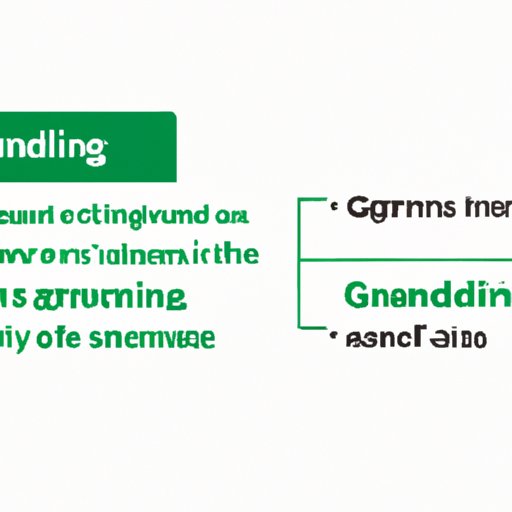Introduction
Gerunds are an essential part of English grammar that are often overlooked. Used correctly, gerunds can enhance the clarity and structure of your writing. In this article, we will explore the meaning of gerunds, how to identify them in sentences, their usage, and placement. We will also compare gerunds to participles and provide tips for using gerunds effectively. Lastly, we will provide practice exercises and a collection of well-crafted sentences that incorporate gerunds.
Exploring the Role and Definition of Gerunds in English Sentences
Gerunds are words that are derived from verbs but function as nouns. They end in -ing and can be used as subjects, objects, or complements in a sentence. For example, “Swimming” is a gerund in the sentence “Swimming is my favorite hobby”. Gerunds can also be used as the object of a preposition, such as “I am good at swimming”.
Spotting Gerunds: How to Identify Them in a Sentence
To identify a gerund, look for a verb that ends in -ing and is used as a noun. Gerunds are often preceded by a possessive pronoun or an article, such as “my swimming”, “the swimming”. They can also be preceded by an adjective, such as “happy swimming”.
Gerunds: An In-Depth Analysis of Their Usage and Placement
Gerunds have several uses in a sentence. They can be used as a subject, object, complement, or object of a preposition. For example, “Swimming is fun” (subject), “I love swimming” (object), “My favorite hobby is swimming” (complement), “I am good at swimming” (object of a preposition).
Gerunds can be placed at the beginning, middle, or end of a sentence. Beginners often place gerunds at the beginning of a sentence, which can create sentence fragments and awkward constructions. Gerunds should be placed in a way that creates a smooth and natural sentence flow. For example, “Reading a book in the park is my favorite activity” (beginning), “I enjoy reading a book in the park” (middle), “My favorite activity is reading a book in the park” (end).
The Importance of Using Gerunds to Enhance Your Writing Style
Gerunds add variety and interest to your writing style. They can help break up lengthy sentences and avoid repetitive sentence structures. Gerunds can also help clarify meaning and emphasize the action in a sentence, as opposed to the subject. For example, “Playing the piano is relaxing” (emphasis on the action) vs. “The piano player looks relaxed” (emphasis on the subject).
Gerunds vs Participles: Understanding the Key Differences
Gerunds and participles are both derived from verbs and end in -ing, but they have different functions in a sentence. Gerunds function as nouns, whereas participles function as adjectives or parts of a verb tense. For example, “Swimming in the ocean” (gerund) vs. “The swimming pool is closed” (participle).
Incorporating Gerunds to Improve Clarity and Sentence Structure
To use gerunds effectively, use them in moderation and place them where they create the most natural sentence flow. Avoid beginning a sentence with a gerund, unless it is part of a larger sentence structure. Experiment with using gerunds in different positions and watch how they affect your writing style. For example, “Walking in the park, I saw a beautiful flower” vs. “I saw a beautiful flower while walking in the park”.
Examples of Well-Crafted Sentences Using Gerunds
Reading well-crafted sentences that use gerunds can help improve your own writing style. Here are a few examples:
- “Running a marathon requires dedication and training”
- “Baking a cake is a fun and rewarding activity”
- “Watching the sunset over the ocean is a breathtaking experience”
Conclusion
Gerunds are a valuable part of English grammar that can enhance your writing style. They are words derived from verbs but function as nouns, and can be used in a variety of ways in a sentence. By identifying gerunds, using them effectively, and experimenting with their placement, you can add variety and clarity to your writing style.
